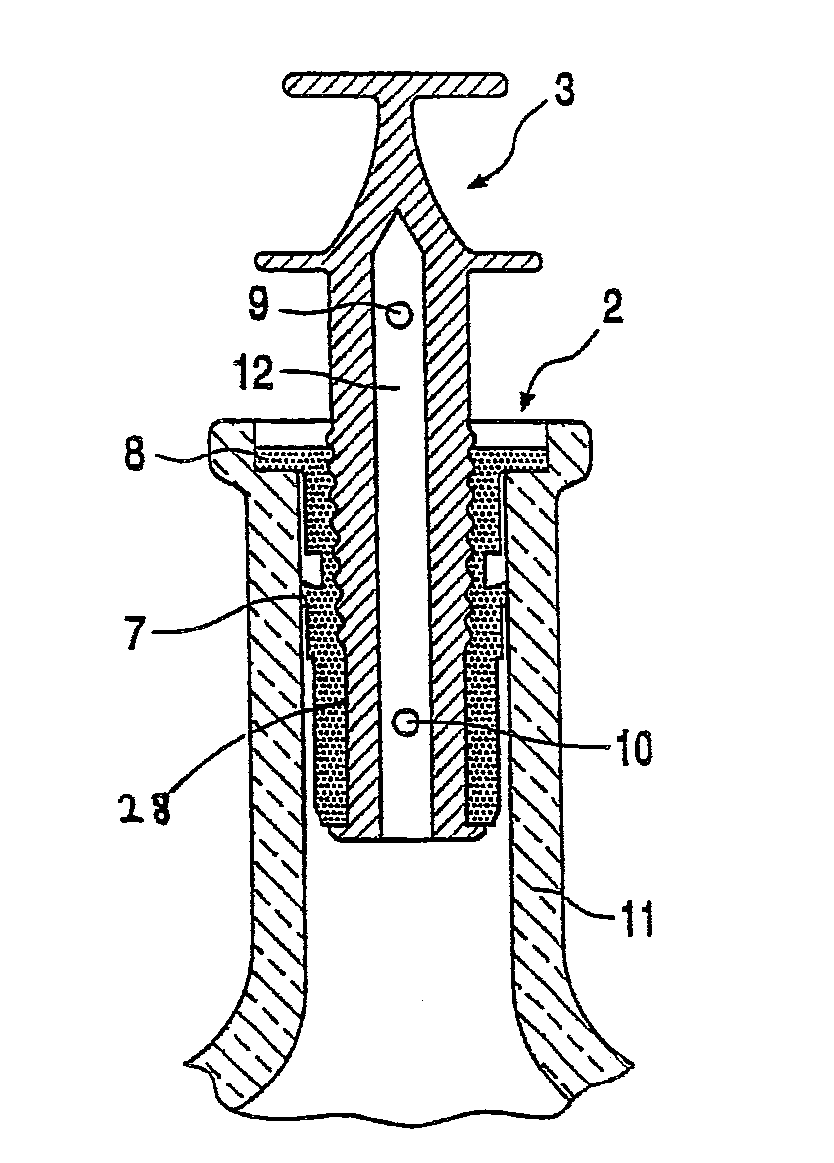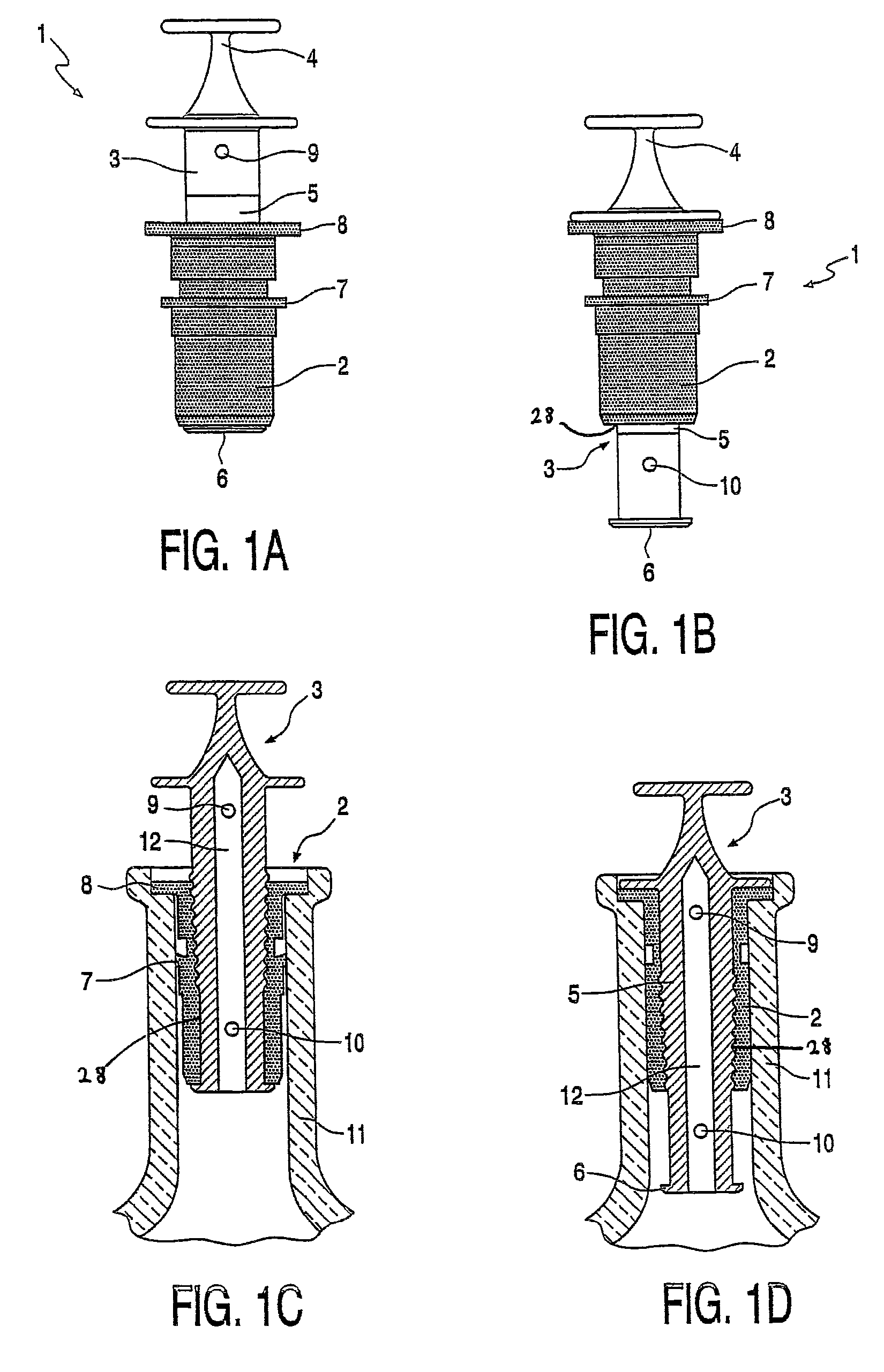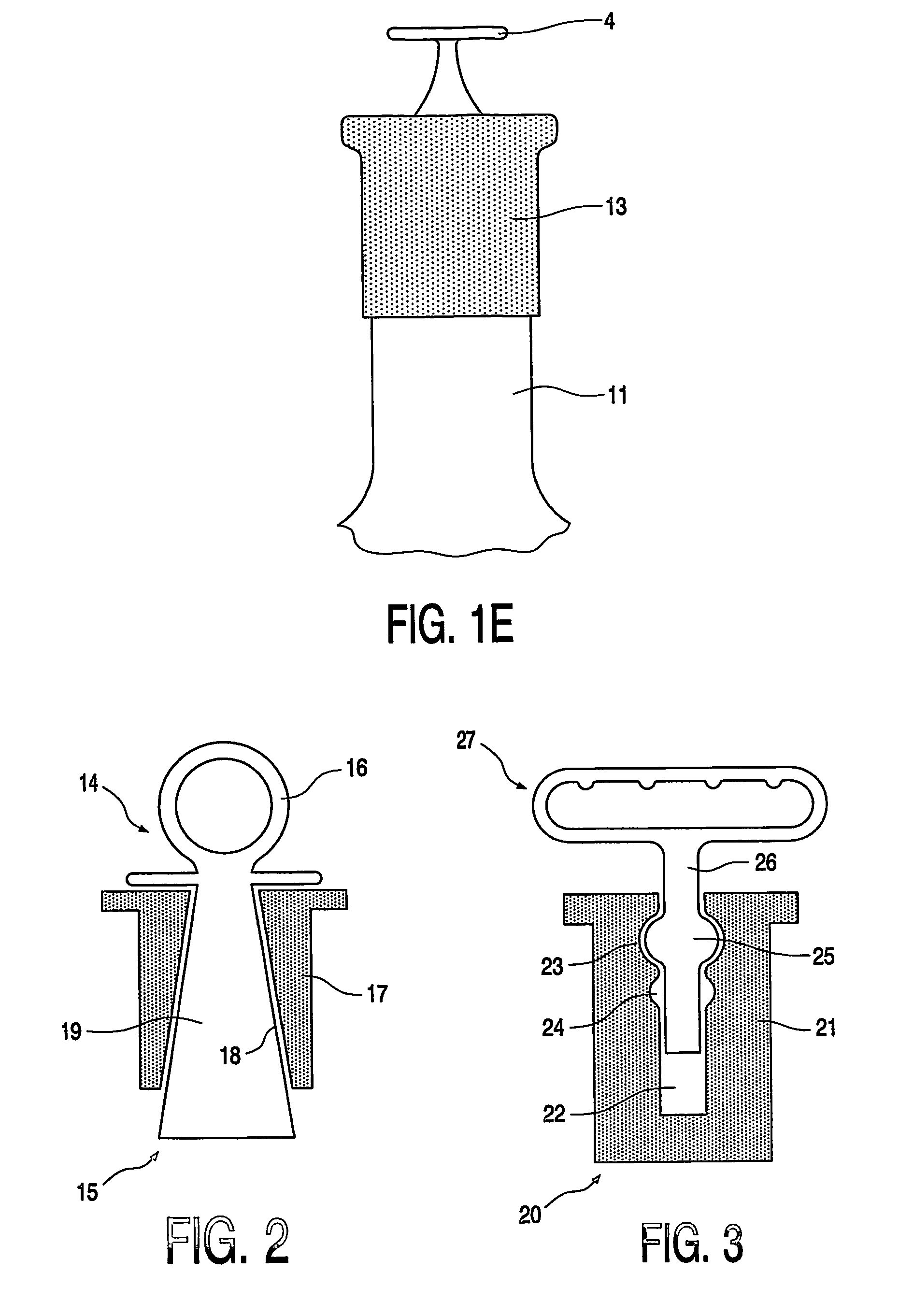Closure and methods for placing and removing such a closure
a technology for liquid containers and closures, applied in the direction of closure lids, pulse automatic control, generator stabilization, etc., can solve the problems of considerable force on existing corks and inconvenient use, and achieve the effect of simple placement and removal of plugs, small resistance, and good plug fitting
- Summary
- Abstract
- Description
- Claims
- Application Information
AI Technical Summary
Benefits of technology
Problems solved by technology
Method used
Image
Examples
Embodiment Construction
[0024]FIG. 1A shows a closure 1 with a plug 2 manufactured from a more flexible material, through which runs a less flexible operating member 3. Operating member 3 is provided with a grip 4 with which a person can grasp operating member 3. A core 5 also forming part of operating member 3 is only partly visible since it is situated for the greater part in the hollow interior of plug 2. Core 5 is formed conically such that it becomes narrower at a greater distance from grip 4. The side of operating member 3 remote from grip 4 is provided with a widened outer end 6 with which plug 2 and operating member 3 are held together. Plug 2 is provided with a sealing ring 7 which provides sealing to a liquid container, not shown in this figure, in which plug 2 is placed. Plug 2 is also provided with a stop edge 8 to prevent plug 2 entering too far into a liquid container. In the relative position of plug 2 and operating member 3 shown in this figure, the periphery of plug 2 is relatively limited...
PUM
 Login to View More
Login to View More Abstract
Description
Claims
Application Information
 Login to View More
Login to View More - R&D
- Intellectual Property
- Life Sciences
- Materials
- Tech Scout
- Unparalleled Data Quality
- Higher Quality Content
- 60% Fewer Hallucinations
Browse by: Latest US Patents, China's latest patents, Technical Efficacy Thesaurus, Application Domain, Technology Topic, Popular Technical Reports.
© 2025 PatSnap. All rights reserved.Legal|Privacy policy|Modern Slavery Act Transparency Statement|Sitemap|About US| Contact US: help@patsnap.com



